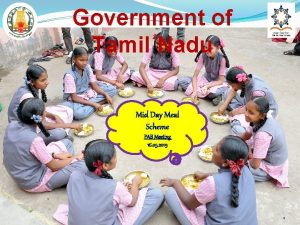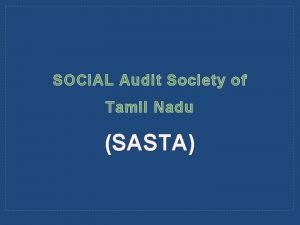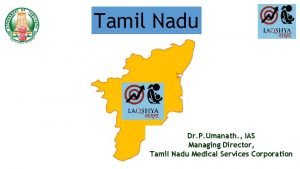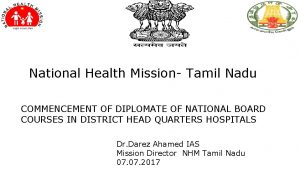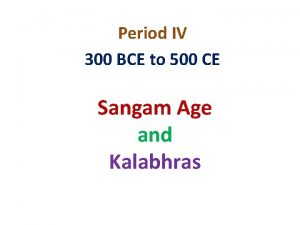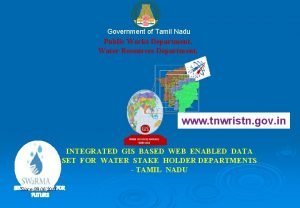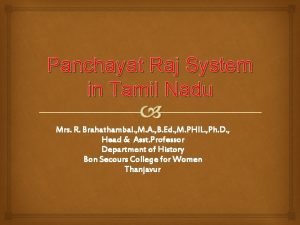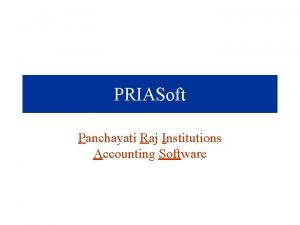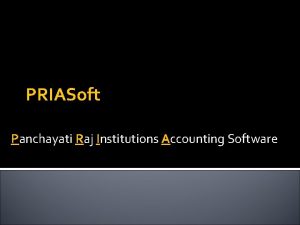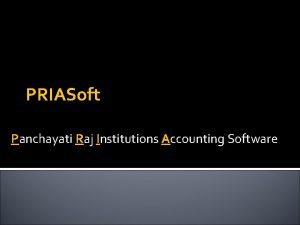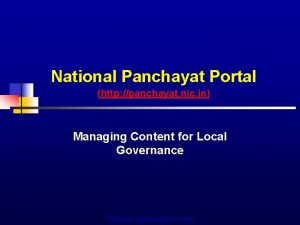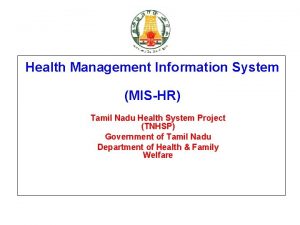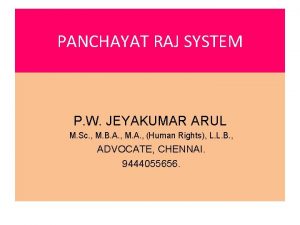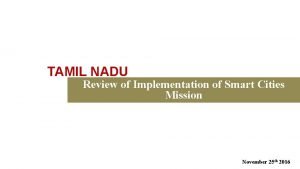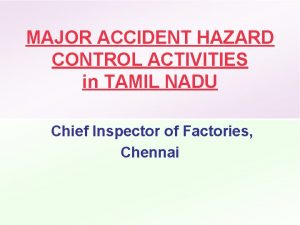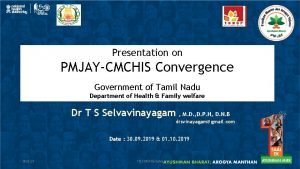Panchayat Raj System in Tamil Nadu Mrs R




















- Slides: 20

Panchayat Raj System in Tamil Nadu Mrs. R. Brahathambal. , M. A. , B. Ed. , M. PHIL. , Ph. D. , Head & Asst. Professor Department of History Bon Secours College for Women Thanjavur

Introduction to Panchayati Raj Rural development is one of the main objectives of Panchayati Raj and this has been established in all states of India except Nagaland, Meghalaya and Mizoram, in all Union Territories except Delhi. and certain other areas.

Introduction to Panchayati Raj These areas include, The scheduled areas and the tribal areas in the states The hill area of Manipur for which a district council exists and Darjeeling district of West Bengal for which Darjeeling Gorkha Hill Council exists

Evolution of Panchayati Raj There were a number of committees appointed by the government of India to study the implementation of self-government at the rural level and also recommend steps in achieving this goal.

Evolution of Panchayati Raj The committees appointed are as follows: Balwant Rai Mehta Committee Ashok Mehta Committee G V K Rao Committee L M Singhvi Committee


Balwant Rai Mehta Committee & Panchayati Raj The committee was appointed in 1957, to examine and suggest measures for better working of the Community Development Programme and the National Extension Service. The committee suggested the establishment of democratic decentralised local government which came to be known as the Panchayati Raj.

Balwant Rai Mehta Committee & Panchayati Raj Recommendations by the committee: Three-tier Panchayati Raj system: gram panchayat, Panchayati Samiti and Zila Parishad. Directly elected representatives to constitute the gram panchayat and indirectly elected representatives to constitute the Panchayat Samiti and Zila Parishad. Planning and development are the primary objectives of the Panchayati Raj system.

Balwant Rai Mehta Committee & Panchayati Raj Recommendations by the committee: Panchayat Samiti should be the executive body and Zila Parishad will act as the advisory and supervisory body. District collector to be made as the chairman of the Zila Parishad. It also requested for provisioning resources so as to help them discharge their duties and responsibilities.


Ashok Mehta Committee & Panchayati Raj The committee was appointed in 1977 to suggest measures to revive and strengthen the declining Panchayati Raj system in India.

Ashok Mehta Committee & Panchayati Raj The key recommendations are: The three-tier system should be replaced with twotier: Zila Parishad (district level) and the Mandal Panchayat (a group of villages). District level as the first level of supervision after the state level.

Ashok Mehta Committee & Panchayati Raj The key recommendations are: Zila Parishad should be the executive body and responsible for planning at the district level. The institutions (Zila Parishad and the Mandal Panchayat) to have compulsory taxation powers to mobilise their own financial resources.

G V K Rao Committee & Panchayati Raj The committee was appointed by the planning commission in 1985. It recognised that development was not seen at the grassroot level due to bureaucratisation resulting in Panchayat Raj Institutions addressed as ‘grass without roots’.

G V K Rao Committee & Panchayati Raj Hence it made some key recommendations which are as follows: Post of District Development Commissioner to be created. He will be the chief executive officer of the Zila Parishad. Elections to the levels of Panchayati Raj systems should be held regularly.

G V K Rao Committee & Panchayati Raj Hence it made some key recommendations which are as follows: Post of District Development Commissioner to be created. He will be the chief executive officer of the Zila Parishad. Elections to the levels of Panchayati Raj systems should be held regularly.

L M Singhvi Committee & Panchayati Raj The committee was appointed by the government of India in 1986 with the main objective to recommend steps to revitalise the Panchayati Raj systems for democracy and development.

L M Singhvi Committee & Panchayati Raj The following recommendations were made by the committee. The committee recommended that the Panchayati Raj systems should be constitutionally recognised. It also recommended constitutional provisions to recognise free and fair elections for the Panchayati Raj systems. The committee recommended reorganisation of villages to make the gram panchayat more viable.

L M Singhvi Committee & Panchayati Raj The following recommendations were made by the committee. It recommended that village panchayats should have more finances for its activities. Judicial tribunals to be set-up in each state to adjudicate matters relating to the elections to the Panchayati Raj institutions and other matters relating to their functioning.

 Time bound promotion
Time bound promotion Noon meal forms 2020-21
Noon meal forms 2020-21 Tamilnadu nursing council
Tamilnadu nursing council Social audit in tamil
Social audit in tamil Tamil nadu horticulture terrace garden kit
Tamil nadu horticulture terrace garden kit Chief minister special cell in tamil
Chief minister special cell in tamil Umanath ias family
Umanath ias family National health mission tamil nadu
National health mission tamil nadu Chola chera pandya map
Chola chera pandya map Tamil nadu public works department
Tamil nadu public works department Ashok mehta committee in tamil
Ashok mehta committee in tamil The holy panchayat title
The holy panchayat title Accounting priasoft
Accounting priasoft Head of accounts
Head of accounts Panchayati raj institutions accounting software (priasoft)
Panchayati raj institutions accounting software (priasoft) The pattini cult was established by which sangam ruler?
The pattini cult was established by which sangam ruler? Nadu donegal
Nadu donegal They are mrs garcia and mrs castro
They are mrs garcia and mrs castro They are mrs garcia and mrs castro
They are mrs garcia and mrs castro Mrs. darling was ___________ of mrs. s.
Mrs. darling was ___________ of mrs. s. What is panchayat
What is panchayat

